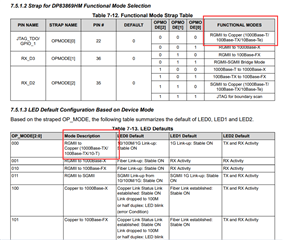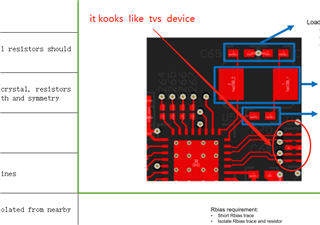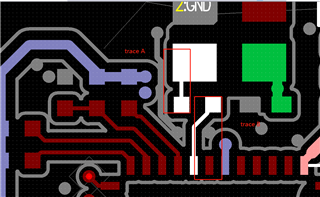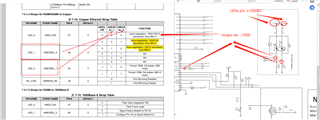Other Parts Discussed in Thread: DP83869
Tool/software:
Hi,
We will use the DP83869HM for the Ethernet PHY, now, we have some issue for the datasheet description:
1. We read the datasheet 7.5.1.2 and 7.5.1.3, we want to know if the RGMII to copper is support 1000Base-TX or not?

2. We read the datasheet, the LED1 IS 2-Level strap configuration, the TARGETVOL Vmin=0.5VDDIO, Vmax=0.88VDDIO when the MODE1;
The PD=9Kohm based on the datasheet 7.5.1.2,
We Calculated the LED1 voltage as below:(The LED resistors Series with 470ohm and Resistors in Parallel with 2.49Kohm, the LED conduction resistance consider to 100ohm),
Vled1= (9K/(470ohm+100ohm)//2.49Kohm+9K)*VDD=0.95VDD, 0.95VDD is morn than 0.88VDD, please kindly provide the principle of this design;
principle

3. Plesae kindly provde the RGMII RX_CLK Delay and TX_CLK Delay register or hardware configuration settings, or how to set the data that we can make sure the timing correctness? thanks.








